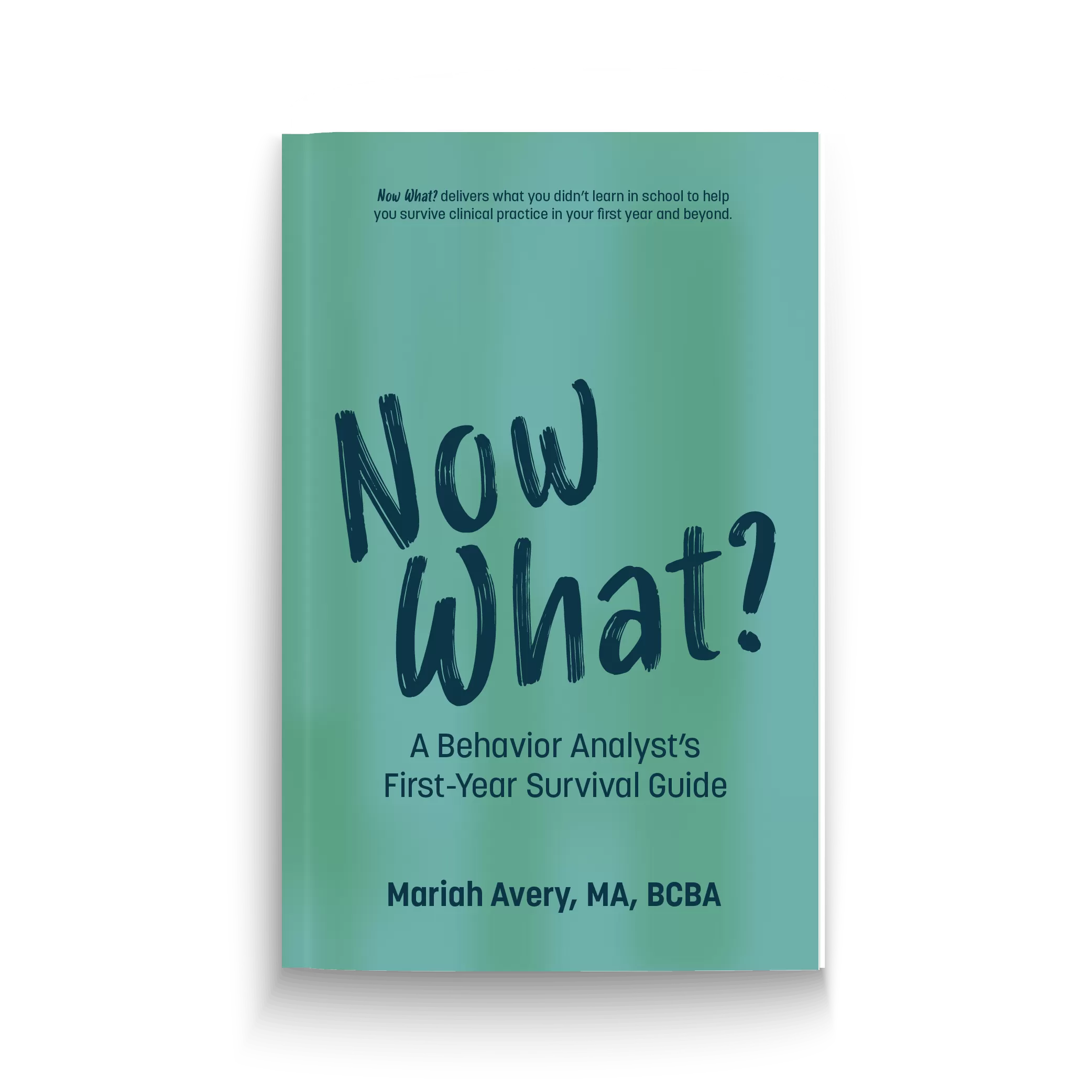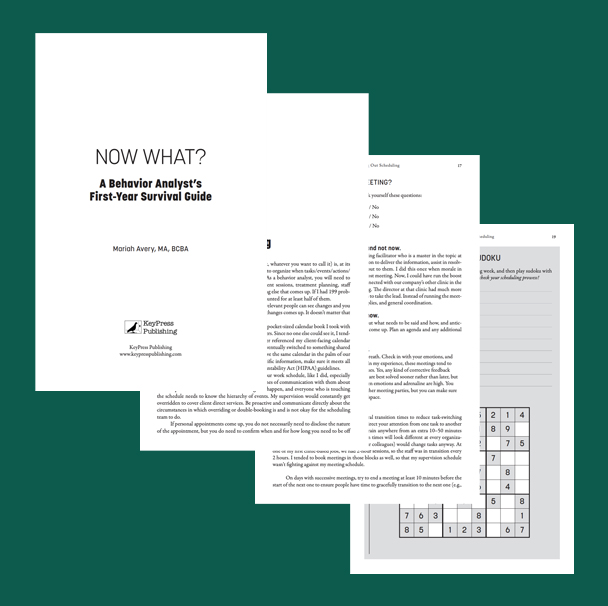Now What?
A Behavior Analyst's First-Year Survival Guide
Now What? combines practical advice with a candid review of the author’s early years as a behavior analyst (flubs included) in hopes that you don’t feel alone in your missteps, misgivings, and general newness. Written in everyday language, the book is filled with skill-building exercises, activities for unwinding, reusable tools, and opportunities to reflect on your own experiences as they happen.
Being a new behavior analyst can feel downright overwhelming. You completed your coursework, field experience, and certification, but now what? There are things that you just don’t learn in courses or fieldwork, but you need to know to function as a behavior analyst (and human).
This survival guide walks you through
- How insurance funding works
- What to document and when
- Collaborating with other service professionals
- Dealing with conflict
- Improving your “bedside” communication
- Recognizing and managing burnout and feelings of imposter syndrome
- Squeezing all that and more into a schedule
- What to do when you inevitably don’t know what to do
- And more!

The chapters are made of a mix of content, personal stories, and activities to help you apply and unwind after a long day of behavior-analyzing

Download a Chapter Excerpt
Download this sneak peek of Now What?
These early days will feel jam-packed from start to end, yet they’ll be over in the blink of an eye. Stop and take a few moments to respond to these questions to capture and reflect on the feelings of your early journey in the field.
About the Author:

Mariah Avery’s passion for behavior analysis began when her son was prescribed ABA therapy, and she could not find any available services within a three-state radius of their home. She completed her MA in Applied Behavior Analysis from Ball State University in 2017 and has since worked in home care, clinics, and schools in Florida and Georgia.